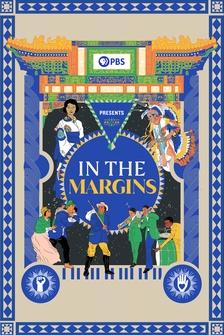This is the Appomattox statue in Alexandria Virginia, a monument constructed in 1889 to honor Alexandria’s Confederate dead in the US Civil War.
Since then, it has been at the center of debates about the use of public space.
People wrestle with the decision to honor the history of those who supported the Southern Confederacy’s secession from the Union, which was largely in order to continue racialized slavery.
Opponents have argued that the statue stands as a testament to intolerance and racism, and that although the statue is still privately owned by the United Daughters of the Confederacy, the fact that it’s situated on public land means that it should be torn down because it represents a racist and harmful viewpoint.
Those in favor of keeping the statue where it is remark that the Confederacy, no matter how outdated and incorrect its stances, was a part of US history and that this history shouldn’t be forgotten.
So today I’ll open up the conversation to look at how monuments like this one represent the US’s struggle to accurately describe its more painful histories.
I’ll discuss why so many Confederate and other Civil War monuments were built between the late 19th century and the first half of the 20th century, and what impulses drove their construction during those crucial years after the war.
Appomattox notably doesn’t show an image of an army general or Confederate politician.
Rather it’s a simple rank and file soldier with his hat in his hand and his head bowed in defeat.
On the base are the names of Alexandrians who died fighting for the Confederacy.
This gesture isn’t uncommon in monuments of fallen soldiers, but its subject has made it cause for public concern.
Claims that Confederate iconography are synonymous with “Southern Heritage” has raised well founded questions about “whose heritage” and “who does this history support or vilify?” And that’s in large part because in erecting monuments after a conflict, it’s highly unusual for the side that definitively lost to be honored, let alone to occupy public space.
Which is why the image of Appomattox, with a visibly defeated Confederate soldier standing in commemoration of his lost cause and fallen comrades is quite unusual.
Rather than raising the now infamous call that “the South shall rise again” both his posture and the inscription of the plaque below his feet indicate otherwise.
Around 2015 and 2016 the US increased the attention it paid to the civil war monuments scattered across the country honoring Confederate generals and soldiers.
Arguments raged on both sides of the debate, with proponents of tearing down these statues noting the inflammatory and racist politics of the men that they were meant to honor.
They also called for the immediate removal of Confederate flags from state symbols.
Those in favor of keeping the symbols and statues argued that these signs were indicative of US history and even if they were abhorrent, they should not be hidden or forgotten.
As headlines circulated around protesters on both sides of the debate, questions started to arise about why the US had so much Confederate iconography to begin with.
When were the statues built and who funded their construction before they occupied public land?
And how do monuments turn individuals into heroes and shape the discourse around our shared national identity?
Well it comes as no surprise that the lion’s share of these symbols sprung into prominence as monuments and memorials after the war’s conclusion.
From the moment the Civil War ended the US has struggled with how to narrate its slave holding past.
But the construction of these monuments and memorials came in two primary waves that weren’t directly tied to the official cease fire.
In fact most came at two key moments within a hundred year span: The Post-Reconstruction Period from the 1880s until the 1920s And... the eve of the US Civil Rights Movement in the 1960s.
It wasn’t a random coincidence that the statues went up during those time periods.
As Professor Sanford Levinson notes in his book on monuments, quote, “those with political power within a given society organize public space to convey (and thus to teach the public) desired political lessons.” But part of the stickiness of the discussion around monuments, as Levinson also notes, is that they aren’t just ideological symbols, they also bear the weight of being public art.
And as he writes about monuments as art: “Art is, among other things, both the terrain of and often a weapon in, the culture wars that course through societies.
This is, of course, especially true of public art--the art chosen self-consciously by public institutions to symbolize the public order and to inculcate in its viewers appropriate attitudes toward that order.” First, we have the end of Reconstruction.
New Confederate monuments in the 1880s and 1890s were promoting a return to white supremacy and institutional slavery.
Reconstruction had spanned from roughly the end of the war until the late 1870s.
The period did see brief strides for newly emancipated black citizens.
But the end of the era was also marked by an incredibly swift reversal of the tides with the rise of the Ku Klux Klan, resurgent white nationalism, increased violence (such as organized lynchings) and reduced rights.
During Reconstruction, when Northern officials remained in temporary control of the war-ravaged Southern states, the symbols and ideology of the Confederacy were removed from public view.
But as the period came to a close, Northern and Southern officials looked to make political concessions, most often at the expense of black citizens.
This included most notably the passing of Jim Crow Laws.
Jim Crow Laws were designed to extend the horrors of institutional slavery in Southern states under a different name.
This meant stopping black citizens from voting, organizing the convict leasing system in order to force black citizens to work without pay, and manipulating the legal system to strip them of Constitutional rights.
For more on convict leasing, be sure to check out our episode on the origins of Private Prisons.
So Confederate monuments were working to promote the (at that time) contemporary ideologies of the state.
Namely, a return to white supremacy and institutional slavery.
It also marked an important moment in the history of men who died and fought for the Confederacy and their families.
Because also around this time the surviving soldiers and their families were aging.
Many had infiltrated public office to continue promoting the official agenda of the Confederacy.
Others turned their eye to establishing private organizations that celebrated a glorified version of the Confederate past.
Enter: the “Cult of the Lost Cause.” In the aftermath of the economic devastation of the war, the so called “Cult of the Lost Cause” became an outlet for white Confederate supporting Southerners to express cultural pride in institutional slavery and their “lost way of life.” A 1999 application made to the National Register of Historic Places notes: “The Cult of the Lost Cause had its roots in the Southern search for justification and the need to find a substitute for victory in the Civil War.
In attempting to deal with defeat, Southerners created an image of the war as a great heroic epic.
A major theme of the Cult of the Lost Cause was the clash of two civilizations, one inferior to the other....Like tragic heroes, Southerners had waged a noble but doomed struggle to preserve their superior civilization.
There was an element of chivalry in the way the South had fought, achieving noteworthy victories against staggering odds.
This was the “Lost Cause” as the late nineteenth century saw it, and a whole generation of Southerners set about glorifying and celebrating it.” But glorification and commemoration of soldiers at the conclusion of wartime wasn’t unique to Southern states.
In fact it was ubiquitous throughout the United States on either side of the Mason Dixon.
In her research on monuments of Civil War soldiers, art historian Sarah Beetham of the Pennsylvania Academy of the Fine Arts, notes that many of the monuments were sold by New England manufacturers (like the Monumental Bronze Co. in Bridgeport, CT) at the end of the 19th century.
In an article for the Washington Post she’s quoted saying how many of the statues are identical in structure, and that companies were selling cheap pre-fab designs to towns all over the country without altering the appearance of the soldiers at all.
It wasn’t until some Southern towns noticed the replication that small alterations were made, including adding slouched Confederate caps.
Another distinguishing feature is the engraving on their belt buckles: with “C.S.” for Confederate Soldier and “U.S.” for Union Soldier.
As mythologies of the Civil War occurred in the public sphere, monuments became particularly fertile ground for advancing individual political agendas.
The second wave of Confederate monuments built came in the 1950s and 1960s, both to mark the hundred year anniversary of Southern defeat and also as a sign of opposition to the 20th century’s Civil Rights movement that saw a number of legal victories for black citizens.
In fact the South Carolina state grounds became the center of heated public debate in 2015, when under the weight of public outrage state officials agreed to lower the Confederate Flag.
But the flag had only been implemented in the capitol since 1961, as a stinging rebuke of the Civil Rights movement.
But although the amount of news coverage of these monuments has begun to fade, statues like Appomattox and others still remain in place around the country.
And in recent counting, the Southern Poverty Law Center notes that there are: 780 monuments, more than 300 of which are in Georgia, Virginia and North Carolina; 103 public K-12 schools and three colleges named for Robert E. Lee, Jefferson Davis or other Confederate icons; 80 counties and cities named for Confederates; 9 observed state holidays in five states; and 10 U.S. military bases.
But at the heart of this debate over monuments is a larger question about how and when we decide to commemorate history and whose stories are told.
Monuments, although they often fade to the background as we zip by them during our busy days, still carry tremendous historical and contemporary weight.
But despite their often forgettable (or in the case of the Citizen Soldier statues, generic) appearances, monuments shape the public narrative of nations.
They exemplify how we create the stories we tell ourselves and each other about our collective past.
This also brings to light who history belongs to, by highlighting and heroising some while others are maligned, harmed, or all together ignored.
And that’s largely because those symbols don’t just mark a particular event or moment.
Rather they elevate something by occupying public space, celebrating or denigrating the narratives of individual historical actors, and bringing into view exactly who history is supposed to be for.















